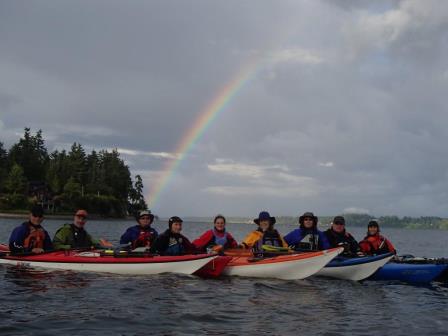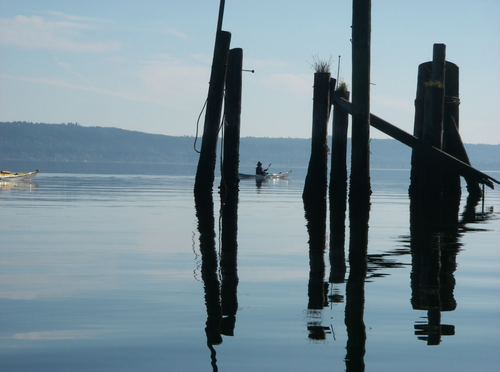Olympia Sea Kayaking Committee
Welcome to our Sea Kayaking Program!

There are two ways to become a sea kayaker with us: (1) attend the basic class we offer every spring or (2) test out of this class with our equivalency process if you're already an experience sea kayaker.
Our typical yearly schedule
September to November: We paddle the Puget Sound on weekends and a few of us paddle during weekdays on scheduled trips.
November to March: While we dial down the sea kayaking (there are still winter trips for those hardy enough) we ramp up the pool sessions every month and even host an eskimo rolling class. In March we have offered an Incident Management Class (reviews rescues and safe boating skills).
March to early June: Each spring we have a trip planning meeting and then offer the Basic Sea kayaking Class in May to MJune. Course sign-up begins in December-January. We also have a “train the trainer" class for those willing to help with the basic class.
May to September: We paddle weekends, some weekdays and every Wednesday evening for beautiful sunset paddles around Boston Harbor.
View photos from our trips and training sessions.
Find Trips Find Courses, clinics & seminars
Sea Kayak Safety Tips
 Every year there is another article about a tragic fatality or desperate rescue in the news. Safety is a strong focus in our group. We participate in an activity that has a safety zone limited by only a few minutes. The Puget Sound water temperature hovers around 50°F in the deeper water and weather can change dramatically in a few hours.
Every year there is another article about a tragic fatality or desperate rescue in the news. Safety is a strong focus in our group. We participate in an activity that has a safety zone limited by only a few minutes. The Puget Sound water temperature hovers around 50°F in the deeper water and weather can change dramatically in a few hours.
We recommend these 20 essentials for safe sea kayaking
- Kayak with flotation at both ends
- Paddle with paddle float
- Spray skirt
- U.S. Coast Guard approved Personal Flotation Device (PFD)
- Appropriate clothing (wet suit, dry suit, etc.)
- Sun protection (sunscreen, sunglasses, hat, lip balm)
- First aid supplies
- Repair kit
- Paddle (spare)
- Signaling device (whistle, fog horn, flares)
- Fire starting tools
- Food
- Water
- Bilge pump with flotation
- Navigation tools (map and compass)
- Spare clothes in dry bag
- Waterproof flashlight
- Emergency shelter
- Weather/VHF radio with group
- Tow rope with group
The best safety “tool” is another experienced kayaker with local knowledge of the area.
Each kayak outing requires careful planning regarding tide flows in the area paddled, weather predicted and observed at launch, planned time on and off the water.
Remember, dress for the water temperature, not the air temperature, and do not forget about wind chill.
